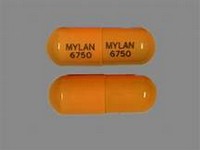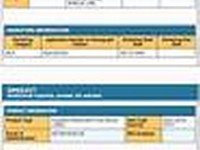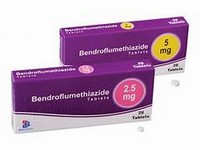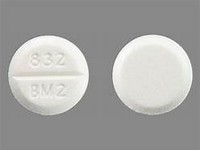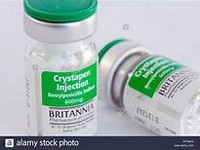nicardipine hydrochloride
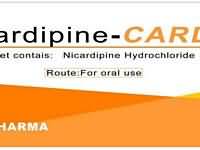
CLINICAL USE
Calcium-channel blocker:Prophylaxis and treatment of angina Mild to moderate hypertension
DOSE IN NORMAL RENAL FUNCTION
20–40 mg 3 times daily
PHARMACOKINETICS
Molecular weight :516 %Protein binding :>99 %Excreted unchanged in urine : <1 Volume of distribution (L/kg) :0.8half-life – normal/ESRD (hrs) :8.6/Unchanged DOSE IN RENAL IMPAIRMENT
GFR (mL/MIN)
20 to 50 : Dose as in normal renal function 10 to 20 : Dose as in normal renal function. Start with small doses <10 : Dose as in normal renal function. Start with small doses DOSE IN PATIENTS UNDERGOING RENAL REPLACEMENT THERAPIES
CAPD :Unlikely to be dialysed. Dose as in GFR <10 mL/min HD :Not dialysed. Dose as in GFR <10 mL/min HDF/high flux :Unknown dialysability. Dose as in GFR <10 mL/minCAV/VVHD :Unknown dialysability. Dose as in GFR 10 to 20 mL/min IMPORTANT DRUG INTERACTIONS
Potentially hazardous interactions with other drugs Anaesthetics: enhanced hypotensive effect Antibacterials: metabolism possibly accelerated by rifampicinAnti-epileptics: effect reduced by carbamazepine, barbiturates, phenytoin and primidone Antifungals: metabolism possibly inhibited by itraconazole and ketoconazoleAntihypertensives: enhanced hypotensive effect, increased risk of first dose hypotensive effect of post-synaptic alpha-blockersAntivirals: concentration possibly increased by ritonavirCardiac glycosides: digoxin concentration increasedCiclosporin: concentration of ciclosporin increased Grapefruit juice: concentration increased – avoid concomitant use Tacrolimus: may increase tacrolimus levels Theophylline: possibly increased theophylline concentration ADMINISTRATION
Reconstition
– Route
Oral Rate of Administration
–Comments
Administration of nicardipine with food appears to reduce the bioavailability and delay the achievement of peak plasma concentrations OTHER INFORMATION
Extensively metabolised in the liver and excreted in the urine and faeces, mainly as inactive metabolitesNicardipine blood levels may be elevated in some renally impaired patients. Therefore, start with a low dose and titrate to BP and response. The dose interval may also need to be extended to 12 hourly
See how to identify renal failure stages according to GFR calculation
See how to diagnose irreversible renal disease
Home

